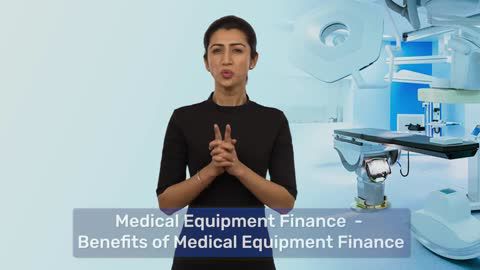In the rapidly advancing world of medical technology, devices like the heart lung bypass machine have revolutionized cardiac surgery and patient care. This sophisticated apparatus, also known as the cardiopulmonary bypass machine, temporarily takes over the function of the heart and lungs during complex surgeries, enabling surgeons to operate on a still and bloodless heart. Such critical medical devices are part of essential medical equipment that hospitals and cardiac care centers invest in to enhance surgical outcomes and patient survival. For hospitals and healthcare providers in India, understanding the functioning, components, cost, and financing options for a heart lung bypass machine is key to making informed decisions about procurement and operational efficiency.
What is a heart lung bypass machine?
The heart lung bypass machine—technically called a cardiopulmonary bypass machine—is a vital device used during open-heart surgeries. It temporarily assumes the roles of the heart and lungs by circulating and oxygenating blood outside the body. This allows the surgeon to stop the heart and perform procedures such as coronary artery bypass grafting (CABG), heart valve repair or replacement, and complex congenital heart defect corrections.
Without this machine, many cardiac surgeries requiring a motionless heart and uninterrupted blood circulation would be impossible. The machine maintains oxygen-rich blood flow to the body’s tissues, ensuring vital organs remain supplied during surgery.
How does a heart lung bypass machine work?
The heart lung bypass machine functions by mimicking the heart’s pumping action and the lungs’ oxygenation process. The working process can be outlined in key steps:
Blood withdrawal: Blood is drained from the patient’s venous system, typically through cannulas inserted in large veins.
Oxygenation: The blood is routed to an oxygenator where it receives oxygen and carbon dioxide is removed, replicating lung function.
Temperature control: The blood temperature is regulated—cooled or warmed—depending on surgical requirements.
Pumping: An arterial pump propels the oxygen-rich blood back into the patient’s arterial system.
Filtration: The system includes filters to remove air bubbles and debris, ensuring safe circulation.
Components of a heart lung bypass machine
A heart lung bypass machine consists of several crucial components that work together seamlessly:
Cannulas: Tubes inserted into blood vessels to withdraw and return blood.
Reservoir: Collects venous blood from the patient before oxygenation.
Oxygenator: Adds oxygen to the blood and removes carbon dioxide.
Pump: Often a roller or centrifugal pump that circulates blood.
Heat exchanger: Regulates the blood temperature for therapeutic hypothermia or warming.
Filters: Trap air bubbles and particulate matter to prevent embolism.
Monitors and sensors: Track blood flow, pressure, oxygen levels, and temperature to ensure patient safety.
Tubing: Medical-grade tubes connecting all components and the patient’s circulatory system.
Uses of heart lung bypass machine in surgery
The heart lung bypass machine is primarily used in surgeries where the heart must be stopped or operated on while maintaining blood circulation. Key uses include:
Coronary Artery Bypass Grafting (CABG): Restoring blood flow to blocked coronary arteries.
Heart valve surgery: Repairing or replacing malfunctioning heart valves.
Congenital heart defect repair: Correcting structural heart abnormalities present from birth.
Heart transplantation: Supporting the patient during the transplant procedure.
Aortic surgery: Repairing or replacing sections of the aorta.
Tumor removal: Excising cardiac tumors safely.
Heart lung bypass machine price range in India
The cost of a heart lung bypass machine in India varies based on features, brand, and technology. Here’s a general price overview:
| Type/ feature | Approximate price range (INR) |
|---|---|
| Basic Cardiopulmonary Bypass Machine | Rs. 30 lakh – Rs. 50 lakh |
| Advanced Models with Digital Controls | Rs. 50 lakh – Rs. 1 crore |
| Multipurpose Machines with Integrated Monitoring | Rs. 75 lakh – Rs. 1.5 crore |
Factors affecting heart lung bypass machine prices
Several factors influence the price of cardiopulmonary bypass machines:
Technology level: Machines with advanced automation, digital monitoring, and safety features cost more.
Brand and manufacturer: Renowned international brands often carry a premium.
Customisation: Specific hospital needs may require custom features increasing cost.
Included accessories: Additional pumps, oxygenators, and monitoring tools affect pricing.
Warranty and service: Longer warranty and superior after-sales support raise the price.
Import taxes and duties: Imported equipment can be costlier due to taxes.
Difference between heart lung bypass machine and ECMO machine
| Feature | Heart Lung Bypass Machine (CPB) | ECMO (Extracorporeal Membrane Oxygenation) machine |
|---|---|---|
| Purpose | Used during cardiac surgeries for temporary heart-lung support | Used for prolonged heart/lung support in critical care |
| Duration of use | Short-term (hours during surgery) | Long-term (days to weeks in ICU) |
| Mobility | Stationary, used in operating rooms | Portable units available for ICU and transport |
| Complexity | Designed for precise control during surgery | Designed for continuous life support in critical patients |
| Patient condition | Stable enough for surgery | Critical patients with heart/lung failure |
Financing options for heart lung bypass machine in India
Acquiring a heart lung bypass machine is a significant investment for any healthcare facility. Many hospitals and cardiac centers opt for financing solutions to manage costs effectively. Flexible loan options like medical equipment finance help spread the cost over manageable installments:
Competitive interest rates: Check current medical equipment finance interest rate offers to select affordable repayment plans.
Fast approval: Streamlined application processes ensure quicker funding, minimising downtime.
Custom tenures: Choose repayment periods that suit your cash flow and budget.
Minimal documentation: Simplified paperwork accelerates loan sanctioning.
Opting for financial assistance can help healthcare providers access cutting-edge medical equipment without upfront capital strain.
Conclusion
The heart lung bypass machine is an indispensable tool in modern cardiac surgery, enabling life-saving operations by temporarily taking over heart and lung functions. Understanding its working, components, price, and financing options is crucial for hospitals and clinics looking to upgrade or expand their cardiac care capabilities. With a variety of machines available in India, healthcare providers can choose models that best fit their clinical needs and budget. Additionally, flexible financing options like a doctor loan and medical equipment financing make acquiring this vital device more accessible. Investing in a high-quality cardiopulmonary bypass machine not only improves surgical outcomes but also strengthens a healthcare facility’s reputation for advanced cardiac care.












